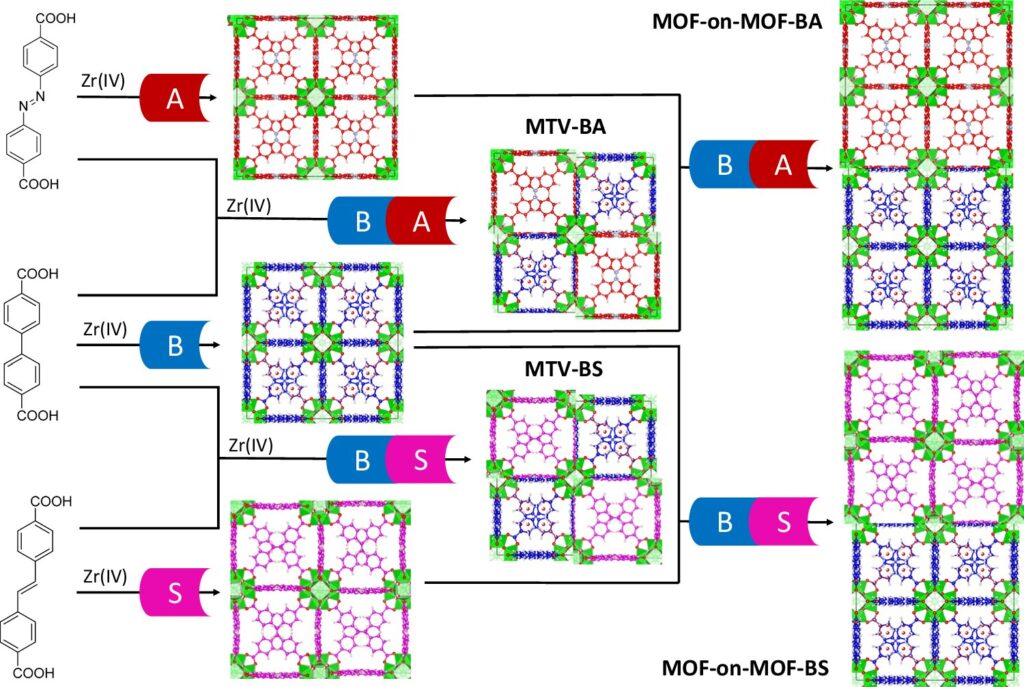Scientists at Oregon State University have taken a big step toward lighting and display technologies that are more energy efficient and better for the planet. The work centers around crystalline, porous materials known as metal organic frameworks, often abbreviated as MOFs, and points toward next-generation materials that may end reliance on rare earth metals.
The study by Kyriakos Stylianou, associate professor of chemistry in the OSU College of Science, and graduate students Kyle Smith and Ankit Yadav appears in Nature Communications.
The findings are important because displays—ubiquitous in communications, computing, medical monitoring and many other aspects of everyday life—and lighting contribute heavily to global energy consumption and greenhouse gas emissions. The rare earth metals that underpin those technologies—europium, terbium, yttrium, cerium, gadolinium and others—are expensive and environmentally hazardous to mine and process.
Made up of positively charged metal ions surrounded by organic “linker” molecules, metal organic frameworks have nanosized pores and tunable structural properties. They can be designed with a variety of components that determine the MOF’s properties, and for this project the scientists developed novel MOF structures that combine two types of porous crystals to enhance light emission.

The researchers explored different ways of combining the different types of crystals. One of those methods, known as MOF-on-MOF—the crystals were stacked like building blocks—resulted in light emission that was roughly four times as energy-efficient as seen in traditional MOFs.
“By controlling how the components interact, we discovered how to reduce energy losses that typically limit brightness in these materials,” Stylianou said. “This higher efficiency means that future LEDs could produce the same amount of light while consuming far less electricity.”
In the United States, Stylianou notes, lighting and display systems consume about 213 billion kilowatt-hours of power annually—a level of energy usage that accounts for 13% of global carbon dioxide emissions, primarily because 80% of electricity generation in the U.S. comes from the burning of fossil fuels.
Replacing rare-earth-based components in lighting and display systems with the new, more sustainable MOF structures would simultaneously reduce production costs, ecological impact and energy consumption, he said. It would also provide an alternative to elements whose global supply chains are fraught with geopolitical tensions.
“There’s an urgent need for advanced, efficient fluorescent materials, and we think our new MOFs can help fill that need,” Stylianou said. “We see a lot of potential in their ability to have economic, environmental and climate impacts.”
More information:
Kyle T. Smith et al, Uncapping energy transfer pathways in metal-organic frameworks through heterogeneous structures, Nature Communications (2025). DOI: 10.1038/s41467-025-62809-4
Citation:
Metal organic frameworks enable a key step toward greener lighting and display technologies (2025, September 2)
retrieved 3 September 2025
from https://techxplore.com/news/2025-09-metal-frameworks-enable-key-greener.html
This document is subject to copyright. Apart from any fair dealing for the purpose of private study or research, no
part may be reproduced without the written permission. The content is provided for information purposes only.

